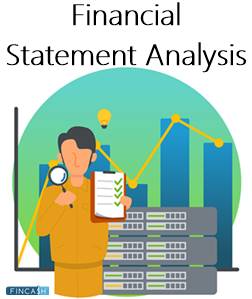Understand the Basics of Financial Statement Analysis
When Investing in a company’s shares, it is obvious that you cannot make a hasty decision, irrespective of how excited you are. While evaluating varying aspects, analyzing the financial statement of the company is something that you cannot miss.
Putting it in the layman’s words, financial statement analysis is one process that helps to assess the finances of a specific company. Being an external stakeholder, you get to have a glimpse into their statements so as to comprehend the overall situation, evaluate business values and financial performance.
If you are completely inexperienced about this matter, have no worries. This post will take you through the entire process so that you can make a better and informed decision.

Objective of Financial Statement Analysis
The purpose of financial reporting and analysis is different for people. However, one typical objective behind it is to acquire information that is useful enough for economic decisions. Thus, there could be three essential objectives of financial statement analysis, such as:
- Understanding the cash flow
- Assessing operating results
- Figuring out the financial position
Also, the proficient departments of the company, the parent company (if available), and the financial department would concentrate upon checking and analyzing the distribution of resources, their compliance with the economic and financial policies, along with the entire capital appreciation, capital maintenance, and financial systems.
Usually, investors put their focus on evaluating the operational capacity, profitability and the funds' usage to comprehend risks and returns. And, creditors may use a financial statement to assess the level of security and risk along with the company’s solvency amidst others.
On top of that, keeping these varying objectives of financial statement analysis in mind, the content of a statement can differ as well.
Talk to our investment specialist
How to Analyze Financial Statement?
There is a handful of effective techniques with straightforward math, turning helpful in the financial analysis of a company. However, before you continue, make sure that you have acquired these following things from the company:
- Cash flow statement analysis
- Income Statement analysis
- Balance sheet analysis
Methods of Financial Statement Analysis
Now, let’s figure out the ways that you can use in your financial statement analysis project:
Financial Ratios
When counting upon financial statement analysis ratios, know that there is a variety of them that can be used to analyze the financial statement of a company, such as:
Efficiency Ratios:
These are such ratio types that allow you to see how well a business is using the assets. Some of the common efficiency ratios are as below:
- Asset Turnover – displaying the use of assets in revenue generation
- accounts payable Turnover – assesses how quickly creditors have been paid off
- Accounts Receivable Turnover – exhibits how frequently the accounts receivable have been paid and collected
- Inventory Turnover – shows the frequency of inventory turnover within a year
Solvency Ratios:
These rations display the competency of a business to pay the long term obligations. There are two different types of these ratios, such as:
- Debt to Asset – indicating assets that get funded by the debt
- Debt to Equity – the total amount of equity that can cover debts
Liquidity Ratios:
These are the ones that ensure if a company is capable of paying off its short term debts by the conversion of current assets into cash. The common liquidity ratios are:
- Cash Ratio – this is the cash percentage that a company has for short term debts
- Quick Ratio – this can be counted by subtracting inventories from current assets to delineate a stricter indicator of the ability
- Current Ratio – this describes the competence to pay off all the current liabilities
Vertical Analysis
This one is a simpler way of analyzing the financial statement. Vertical analysis of financial statements deals with a one-year time period, demonstrating the results of the balance sheet and income statement as percentages of assets and sales, respectively.
Analyzing the income statement with this method will offer you a comprehensive look into the cost of products sold, gross margin, and the expenditure in the form of a percentage of the sales value for that certain period.
And, if you analyze a balance sheet and its categories, such as equity, liabilities, and assets, with this method, you can figure out the percent of line items that are of the total assets.
Horizontal Analysis
Horizontal analysis can be conducted by comparing financial information’s worth that has been taken from different periods. You can also use financial ratios while executing horizontal analysis and compare the current year’s performance with the previous years of a company.
Usually, this analysis type is performed on horizontal balance sheets and income statements. Once done, you get to know more about the data changes, in terms of both positive and negative aspects. However, keep in mind that these changes only appear if the debt to equity has altered over the period.
Conclusion
Once you are done with the analysis, there would be a handful of additional questions lingering in your mind to clarify the importance of financial statement analysis. What you must prioritize while making your decision is the authenticity of numbers. Can you really trust them? There could obviously be some irregularities that may go unnoticed. Thus, if you are still not sure, make sure that you seek help from a professional before diving further.
All efforts have been made to ensure the information provided here is accurate. However, no guarantees are made regarding correctness of data. Please verify with scheme information document before making any investment.
You Might Also Like












